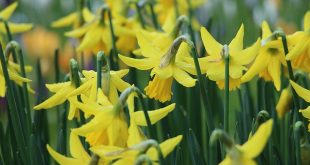Most of us know that the plants and herbs in our garden are capable of amazing things; all very well if you know the plants in your garden!
Herbs add a lot to the landscape garden, not only the fragrance they generously give, they are also pretty with gorgeous flowers.
How do we tap into those miracles and find out which plants do what?
Using your herbs and spices in the kitchen with any dish you are making is extremely important in building up the Immune system and keeping you healthy, as is equally using your herbs for illness.
It is very important to know the botanical names of the plants. Just because an herbal remedy is natural, does not mean it is safe! When I first acquired the passion for growing herbs, I became a kleptomaniac in gathering as many species as I could lay my hands on! I needed to know so much more. Many different herbs have the same nicknames and sometimes not necessarily the plant that is the one to use medicinally. I overcame this botanical name issue by labelling everything with the common and botanical name and once you do this and working in the garden, propagating and germinating, the information stays in the brain, I promise!
We forget that in all but the last fifty years or so, humans and animals instinctively, have relied almost entirely on plants to treat all manner of illnesses, from minor problems such as coughs and colds to life threatening diseases such as tuberculosis and malaria.
Over the years of antibiotic usage, infectious organisms have developed resistance to synthesized drugs, for example, the herb qing hao (Artemisia annua) and its active constituent artemisin are now being used to treat malaria (one of the biggest killers in the world) in areas of the world, where the protozoa causing the infection no longer respond to conventional treatment.
Herbal medicine often compliments conventional treatments, providing safe, well-tolerated remedies for chronic illnesses. It is experiencing a dramatic renaissance in Western countries, partly because no effective conventional treatment as yet exists for many chronic illnesses, such as asthma, arthritis and irritable bowel syndrome. In addition, concern over the side effects of biomedicine is encouraging people to look for more gentler forms of treatment.
It is estimated that 10-20% of hospital patients in the West are there due to the side effects of conventional medicine! When using herbs do so responsibly; consult your doctor about your health conditions and use of herbal supplements. Herbs may be harmful if taken for the wrong conditions, used in excessive amounts, combined with prescription drugs or alcohol, or used by persons who don’t know what they are doing.
A herb garden is always an attractive feature in the garden, but if there is not enough space for a herb garden, plant them in between existing garden plants. Make your garden useful as well as pretty. During historical times the herb garden was essential.
Not only for culinary, companion planting, insect repellent uses, but especially for home remedies. In each house they would have a separate small room with lotions and potions already made for every ailment. The Lady of The House would be responsible for this. Shelves lined with prepared labeled tinctures and lotions. Those of us who believe in using herbal medicine see it as uncompounded, pure, unadorned, straightforward, and therefore good. It seems that herbal treatments are at last being given the recognition they deserve.
Sir Francis Drake brought back Santolina (Santolina chamaecyparissus) as a hedging for knot gardens for Queen Elizabeth and have remained the pride of kings, queen and aristocrats for centuries. Popular plants for the knot garden would include germander, thyme and marjoram. Southernwood, lemon balm, hyssop and costmary are also used.
There are many varieties of this plant in different textures and foliage colour. It is valuable for its insect repellent properties. A sprig in a drawer to repel fish moth is very effective. Can be clipped easily and the other varieties can be added to grow as if they are hopping over the other varieties in a criss-cross in the knot garden.
 A knot garden is a formal garden with an intricate design and gets its name because the pattern often includes a design in which plants are planted to resemble a knotted rope. You can add a topiary or a taller plant as a centre piece to give it balance…and obviously to be useful. I love useful plants!
A knot garden is a formal garden with an intricate design and gets its name because the pattern often includes a design in which plants are planted to resemble a knotted rope. You can add a topiary or a taller plant as a centre piece to give it balance…and obviously to be useful. I love useful plants!
With your herbs cut them back regularly as some get straggly if allowed to get too big. Use the clippings for the remedies, culinary dishes. They will dry nicely in a well ventilated room and keep in a well sealed jar for a long time.
I am listing a few plants, not only medicinal as some of them are wonderful culinary plants, which can be added to your garden. Your choice, there are thousands more that I could bang on about but for now my wish is not to confuse you!
Medicinal and Culinary Plants suggestions:
 Bay leaf Laurus nobilis Leaves are a preservative, important ingredient of bouquet garni, added to sauces. Medicinally for indigestion, poor appetite, colic, wind. Externally dandruff, rheumatism, sprains, bruises, ulcers and scabies. Insect repellent and preservative..
Bay leaf Laurus nobilis Leaves are a preservative, important ingredient of bouquet garni, added to sauces. Medicinally for indigestion, poor appetite, colic, wind. Externally dandruff, rheumatism, sprains, bruises, ulcers and scabies. Insect repellent and preservative..
 Bergamot Monarda didyma Aromatic, stimulant, expectorant lowers fever, benefits digestion. Leaves infused as tea gives Earl Grey Flavour. to China tea. Used internally for minor digestive complaints. Used for greasy hair, oily skin.
Bergamot Monarda didyma Aromatic, stimulant, expectorant lowers fever, benefits digestion. Leaves infused as tea gives Earl Grey Flavour. to China tea. Used internally for minor digestive complaints. Used for greasy hair, oily skin.
 Calendula – Calendula officinalis – A tea from flowers antifungal, anti-viral. As inflammatory for problems of the digestive system, gastritis, peptic ulcers, colitis. Detoxifies, internally for fevers, infections, eczema and acne. Cleansing liver and gallbladder. Externally made into a cream – it astringes the capillaries explaining its effectiveness for wounds, cuts, burns, sunburn, cracked nipples, acne, rashes, fungal problems such as ringworm, athelete’s foot, thrush, nappy rash, cradle cap,varicose veins.
Calendula – Calendula officinalis – A tea from flowers antifungal, anti-viral. As inflammatory for problems of the digestive system, gastritis, peptic ulcers, colitis. Detoxifies, internally for fevers, infections, eczema and acne. Cleansing liver and gallbladder. Externally made into a cream – it astringes the capillaries explaining its effectiveness for wounds, cuts, burns, sunburn, cracked nipples, acne, rashes, fungal problems such as ringworm, athelete’s foot, thrush, nappy rash, cradle cap,varicose veins.
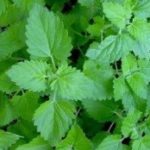 Catnip – Nepeta cataria – (Catmint Nepeta mussinii is a different plant)As a tea is a sedative. Settles stomach, stimulates sweating thus reducing fevers. Pleasant taste, effective for colds, flu,fever in children. Anti-flatulent, indigestion and colic. Treats headaches related to digestive problems. A tincture is beneficial as friction rub – rheumatism, arthritis. Made into an ointment for haemorrhoids. Oh, and Cats love it!
Catnip – Nepeta cataria – (Catmint Nepeta mussinii is a different plant)As a tea is a sedative. Settles stomach, stimulates sweating thus reducing fevers. Pleasant taste, effective for colds, flu,fever in children. Anti-flatulent, indigestion and colic. Treats headaches related to digestive problems. A tincture is beneficial as friction rub – rheumatism, arthritis. Made into an ointment for haemorrhoids. Oh, and Cats love it!
 Chamomile – Matricaria recucita – Digestive problems, suitable for children, pain, indigestion, nausea, acidity, heartburn, gastritis, wind, colic. Used for hiatus hernia, peptic ulcer, Crohn’s disease and irritable bowel syndrome. Strong anti-spasmodic; relaxes tense, aching muscles, eases period pain. Removes irritability and promotes sleep, especially in children. For morning sickness but no more than 5 cups a day. Parts used: 7-10 flowers in a mug of boiling water.
Chamomile – Matricaria recucita – Digestive problems, suitable for children, pain, indigestion, nausea, acidity, heartburn, gastritis, wind, colic. Used for hiatus hernia, peptic ulcer, Crohn’s disease and irritable bowel syndrome. Strong anti-spasmodic; relaxes tense, aching muscles, eases period pain. Removes irritability and promotes sleep, especially in children. For morning sickness but no more than 5 cups a day. Parts used: 7-10 flowers in a mug of boiling water.
 Chilli species– Capsicum sp – Taken as tea/capsule increases metabolism, effective for circulatory system; it feeds vital elements into cell structure of capillaries, veins, arteries and helps adjust blood pressure to normal levels. Cleans arteries helping to rid the body of the bad LDL cholesterol and triglycerides. Good for stomach, intestinal tract, rebuilding tissue in stomach, facilitating healing with stomach and intestinal ulcers, helping heart disease, ancer, tuberculosis, infertility, rheumatism, leukemia. Regulates flow of blood from head to feet so pressure is equalized. Alleviates allergies, muscle cramp, improves digestion, gives pep and energy, helps wound healing with minimal scar tissue. Can be taken continuously.
Chilli species– Capsicum sp – Taken as tea/capsule increases metabolism, effective for circulatory system; it feeds vital elements into cell structure of capillaries, veins, arteries and helps adjust blood pressure to normal levels. Cleans arteries helping to rid the body of the bad LDL cholesterol and triglycerides. Good for stomach, intestinal tract, rebuilding tissue in stomach, facilitating healing with stomach and intestinal ulcers, helping heart disease, ancer, tuberculosis, infertility, rheumatism, leukemia. Regulates flow of blood from head to feet so pressure is equalized. Alleviates allergies, muscle cramp, improves digestion, gives pep and energy, helps wound healing with minimal scar tissue. Can be taken continuously.
 Comfrey – Symphytum grandiflorum– Latin meaning – ‘con-firma, meaning the bone is “made firm”, Symphytum derived Greek for “to unite” and knit bone. All aerial parts, roots are used, Not to be taken internally. Contains allantoin-speeds up skin’s cell regeneration healing in a 1/3 of the time. A cream is made, applied to cuts, bruises, sprains, swelling, broken bones, eczema, psoriasis, rashes, acne, boils. Ffresh leaves can be applied to any swelling/bruising by placing them bruised between two piece of muslin, boiling water poured onto the fabic/comfrey and bandaged on to the area as hot as can be tolerated and re-applied 3 times a day. It contains huge amounts of Calcium, Potassium, Vitamin B12, valuable on the compost heap as well.
Comfrey – Symphytum grandiflorum– Latin meaning – ‘con-firma, meaning the bone is “made firm”, Symphytum derived Greek for “to unite” and knit bone. All aerial parts, roots are used, Not to be taken internally. Contains allantoin-speeds up skin’s cell regeneration healing in a 1/3 of the time. A cream is made, applied to cuts, bruises, sprains, swelling, broken bones, eczema, psoriasis, rashes, acne, boils. Ffresh leaves can be applied to any swelling/bruising by placing them bruised between two piece of muslin, boiling water poured onto the fabic/comfrey and bandaged on to the area as hot as can be tolerated and re-applied 3 times a day. It contains huge amounts of Calcium, Potassium, Vitamin B12, valuable on the compost heap as well.
 Coriander (Coriandrum sativum) Many culinary uses. Medicinally used for minor digestive problems. Externally for haemorrhoids and painful joints. Seeds reduce griping in laxative preparations. Oil adds to flavor of Gin and Chartreuse
Coriander (Coriandrum sativum) Many culinary uses. Medicinally used for minor digestive problems. Externally for haemorrhoids and painful joints. Seeds reduce griping in laxative preparations. Oil adds to flavor of Gin and Chartreuse
 Echinacea – Echinacea purpurea – Taken as a tincture stimulates immune system countering both bacterial & viral infections, inhibiting ability of viruses to enter body and take over cells. An anti-bacterial, anti-fungal. Used extensively in HIV/AIDS. Effective as gargle; throat infections, asthma. Whole plant is used. Only to be taken at the onset of illness and stopped when feeling better otherwise it becomes ineffective.
Echinacea – Echinacea purpurea – Taken as a tincture stimulates immune system countering both bacterial & viral infections, inhibiting ability of viruses to enter body and take over cells. An anti-bacterial, anti-fungal. Used extensively in HIV/AIDS. Effective as gargle; throat infections, asthma. Whole plant is used. Only to be taken at the onset of illness and stopped when feeling better otherwise it becomes ineffective.
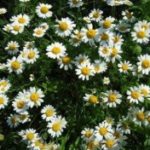 Feverfew – Tanacetum parthenium – A prophylactic herb. Four leaves per day chewed fresh for migraines (especially associated with menstruation) arthritic joint pain. Natural panacea, anti-inflammatory. Lowers temperatures and cools the body. Induces menstruation, given in childbirth to expel placenta. It has to be taken regularly every day in order to be effective.
Feverfew – Tanacetum parthenium – A prophylactic herb. Four leaves per day chewed fresh for migraines (especially associated with menstruation) arthritic joint pain. Natural panacea, anti-inflammatory. Lowers temperatures and cools the body. Induces menstruation, given in childbirth to expel placenta. It has to be taken regularly every day in order to be effective.
 Helychryssum petiolare (imphepho) Coughs, colds, high blood pressure & infections treated with this herb. The smoke of the burning leaves is inhaled as a pain reliever. Leaves used on wounds prevent infection. Khoikoi used the leaves and flowers as bedding (hence the nickname ‘Hottentotsgooiegoed’. Burning a mixture of Sage and Helychryssum makes pleasant insect repellent. keeping flies and mosquitoes away.
Helychryssum petiolare (imphepho) Coughs, colds, high blood pressure & infections treated with this herb. The smoke of the burning leaves is inhaled as a pain reliever. Leaves used on wounds prevent infection. Khoikoi used the leaves and flowers as bedding (hence the nickname ‘Hottentotsgooiegoed’. Burning a mixture of Sage and Helychryssum makes pleasant insect repellent. keeping flies and mosquitoes away.
 Hyssop – Hyssopus officinalus – Hyssop derives from the Hebrew ezob, or Holy Herb. Used for purifying temples and ritual cleansing of lepers. The mould that produces penicillin grows on its leaf. Infuse large sprigs of hyssop in ‘just off the boil’ water makes natural antibiotic wash for any ailment. Internally as a tea0 or tincture, used to treat respiratory infections especially excessive mucous production encouraging more mucous production gently stimulating expectoration. This action clears congested phlegm.
Hyssop – Hyssopus officinalus – Hyssop derives from the Hebrew ezob, or Holy Herb. Used for purifying temples and ritual cleansing of lepers. The mould that produces penicillin grows on its leaf. Infuse large sprigs of hyssop in ‘just off the boil’ water makes natural antibiotic wash for any ailment. Internally as a tea0 or tincture, used to treat respiratory infections especially excessive mucous production encouraging more mucous production gently stimulating expectoration. This action clears congested phlegm.
 Lady’s Mantle (Achemilla mollis) Whole plant is used controlling bleeding and discharge, internally for excessive or irregular menstruation, menopausal problems, diarrhoea. Externally for vaginal discharge and vulval itching.
Lady’s Mantle (Achemilla mollis) Whole plant is used controlling bleeding and discharge, internally for excessive or irregular menstruation, menopausal problems, diarrhoea. Externally for vaginal discharge and vulval itching.
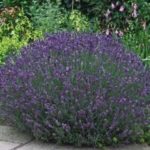 Lavender – Lavandula officinalis syn.angustifolia sp.- Infusion, used as wash is antibacterial, antiseptic. Calms the nervous system, aiding sleep,reducing irritability, headaches, depression, migraine. Reduces muscle tension, relieves griping wind, indigestion and colic. Alleviates asthma, especially linked to nervousness. A sprig of lavender under the pillow, or the essential oil burning in the room at night, aids sleep.
Lavender – Lavandula officinalis syn.angustifolia sp.- Infusion, used as wash is antibacterial, antiseptic. Calms the nervous system, aiding sleep,reducing irritability, headaches, depression, migraine. Reduces muscle tension, relieves griping wind, indigestion and colic. Alleviates asthma, especially linked to nervousness. A sprig of lavender under the pillow, or the essential oil burning in the room at night, aids sleep.
 Lemon Balm – Melissa officinalis – Taken as a tea lifts the spirits. Taken regularly it relieves stress and anxiety by calming the nervous system. Beats any tranquilizer, must be taken 3 x a day, every day to be effective It is beneficial for depression. It inhibits Thyroid action. It was used years ago to keep dairy cows calm in the dairy whilst being milked.
Lemon Balm – Melissa officinalis – Taken as a tea lifts the spirits. Taken regularly it relieves stress and anxiety by calming the nervous system. Beats any tranquilizer, must be taken 3 x a day, every day to be effective It is beneficial for depression. It inhibits Thyroid action. It was used years ago to keep dairy cows calm in the dairy whilst being milked.
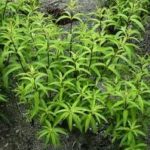 Lemon verbena (Aloysia triphylla) The essential oil is both insecticidal and bactericidal. Internally for feverish colds, indigestion. In aromatherapy for nervous and digestive problems, acne, boils and cysts. Used in many skin preparations for its gorgeous scent as well as calming down the skin.
Lemon verbena (Aloysia triphylla) The essential oil is both insecticidal and bactericidal. Internally for feverish colds, indigestion. In aromatherapy for nervous and digestive problems, acne, boils and cysts. Used in many skin preparations for its gorgeous scent as well as calming down the skin.
 Lovage (Levisticum officinale) For digestion, relaxes spasms, increases perspiration, diurectic, expectorant, effective against many disease causing organisms. Internally for colic, wind, poor appetite, kidney stones, cystitis, painful menstruation, slow labour, sore throat, ulcers. Culinary flavourant.
Lovage (Levisticum officinale) For digestion, relaxes spasms, increases perspiration, diurectic, expectorant, effective against many disease causing organisms. Internally for colic, wind, poor appetite, kidney stones, cystitis, painful menstruation, slow labour, sore throat, ulcers. Culinary flavourant.
 Marjoram sweet (Oreganum marjorana) Internally bronchial complaints, tension headaches, insomnia, anxiety, minor digestive upsets, painful menstruation, Externally for bronchial congestion, muscular pain, arthritis, sprains and stiff joints. Delicious culinary herb! Once dried flavour very strong.
Marjoram sweet (Oreganum marjorana) Internally bronchial complaints, tension headaches, insomnia, anxiety, minor digestive upsets, painful menstruation, Externally for bronchial congestion, muscular pain, arthritis, sprains and stiff joints. Delicious culinary herb! Once dried flavour very strong.
 Marshmallow (Althea officinalis) A sweet, mucilaginous herb soothes & soften tissues, expectorant effects, controls bacterial infection. Internally for inflammation, ulceration digestive tract, hiatus hernia, bronchitis, catarrh, asthma, whooping cough, cystitis (roots used), coughs. Externally for boils, abscesses, eye, skin inflammations, insect bites, splinters, minor injuries, gingivitis, mastitis, gangrene.
Marshmallow (Althea officinalis) A sweet, mucilaginous herb soothes & soften tissues, expectorant effects, controls bacterial infection. Internally for inflammation, ulceration digestive tract, hiatus hernia, bronchitis, catarrh, asthma, whooping cough, cystitis (roots used), coughs. Externally for boils, abscesses, eye, skin inflammations, insect bites, splinters, minor injuries, gingivitis, mastitis, gangrene.
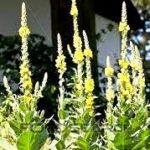 Mullein (Verbascum thapsus) Whole plant, leaves & flowers used. Cooling, mucilaginous herb that soothes, lubricates tissues, promotes healing, expectorant diuretic, analgesic and anti-septic effects. Internally coughs, whooping cough, bronchitis, laryngitis, tonsillitis, tracheitis, asthma, flu, respiratory, catarrh, tuberculosis, urinary tract, infections, nervous tension and insomnia. Externally for earache (flowers in Olive oi), sores, wounds, boils, rheumatic pain, haemorrhoids, chilblains. Combines well with Horehound – Marrubium vulgare for bronchitis.
Mullein (Verbascum thapsus) Whole plant, leaves & flowers used. Cooling, mucilaginous herb that soothes, lubricates tissues, promotes healing, expectorant diuretic, analgesic and anti-septic effects. Internally coughs, whooping cough, bronchitis, laryngitis, tonsillitis, tracheitis, asthma, flu, respiratory, catarrh, tuberculosis, urinary tract, infections, nervous tension and insomnia. Externally for earache (flowers in Olive oi), sores, wounds, boils, rheumatic pain, haemorrhoids, chilblains. Combines well with Horehound – Marrubium vulgare for bronchitis.
 Nasturtium – Nasturtium leaves and flowers can be chewed raw, added to salads or placed into sandwiches as they are extremely high in Vitamin C. At the onset of a tickling feeling in the back of the throat, eat 5 Nasturtium leaves, an hour later eat 4, and so on, the symptoms will disappear.
Nasturtium – Nasturtium leaves and flowers can be chewed raw, added to salads or placed into sandwiches as they are extremely high in Vitamin C. At the onset of a tickling feeling in the back of the throat, eat 5 Nasturtium leaves, an hour later eat 4, and so on, the symptoms will disappear.
 Oregano (Oregano marjorana var: hirtum) Internally bronchial complaints, tension headaches, insomnia, anxiety, minor digestive upsets, painful menstruation, Externally for bronchial congestion, muscular pain, arthritis, sprains and stiff joints. Natural anti-biotic. Delicious culinary herb!
Oregano (Oregano marjorana var: hirtum) Internally bronchial complaints, tension headaches, insomnia, anxiety, minor digestive upsets, painful menstruation, Externally for bronchial congestion, muscular pain, arthritis, sprains and stiff joints. Natural anti-biotic. Delicious culinary herb!
 Pyrethrum (Chrysanthemum cinnerariifolium) Dried seed heads are used infused into boiling water and a little sunlight liquid, when cooled spray immediately on non-wanted insects. Spot spray as can kill good bugs. Totally safe for animals. It paralyses the nervous system of the insect.
Pyrethrum (Chrysanthemum cinnerariifolium) Dried seed heads are used infused into boiling water and a little sunlight liquid, when cooled spray immediately on non-wanted insects. Spot spray as can kill good bugs. Totally safe for animals. It paralyses the nervous system of the insect.
 Rhubarb Roots harvested in Autumn from plants that are at least six years old, then dried for later use. Used for cholesterol, antiseptic, anti-spasmodic, anti-tumor, astringent, diuretic, laxative, enema, stomach problems and tonic. Internally in small doses, acts as an astringent tonic for digestive system, larger doses acts as very mild laxative. Root taken internally for chronic constipation, diarrhea, liver & gall bladder, hemorrhoids, menstrual problems, skin eruptions due to toxins. Externally, root used to treat burns. Enhances appetite taken before meals in small amounts, promotes blood circulation, relieves pain in injury, inflammation, inhibits intestinal infections. reduce auto-immune reactions. Useful in treating Hepatitis B.
Rhubarb Roots harvested in Autumn from plants that are at least six years old, then dried for later use. Used for cholesterol, antiseptic, anti-spasmodic, anti-tumor, astringent, diuretic, laxative, enema, stomach problems and tonic. Internally in small doses, acts as an astringent tonic for digestive system, larger doses acts as very mild laxative. Root taken internally for chronic constipation, diarrhea, liver & gall bladder, hemorrhoids, menstrual problems, skin eruptions due to toxins. Externally, root used to treat burns. Enhances appetite taken before meals in small amounts, promotes blood circulation, relieves pain in injury, inflammation, inhibits intestinal infections. reduce auto-immune reactions. Useful in treating Hepatitis B.
 Rosemary (Rosmarinus officinalis) – Taken as a tea, has a similar action to that of coffee. Poor circulation, raises low blood pressure, valuable for fainting and weakness associated with deficient circulation. Aids recovery from long term stress and chronic illness, stimulating the adrenal glands for debility in poor circulation and digestion. It improves hair growth by improving blood flow to the scalp. Every-day for memory. Can be taken continuously. Parts used: Stem and leaves
Rosemary (Rosmarinus officinalis) – Taken as a tea, has a similar action to that of coffee. Poor circulation, raises low blood pressure, valuable for fainting and weakness associated with deficient circulation. Aids recovery from long term stress and chronic illness, stimulating the adrenal glands for debility in poor circulation and digestion. It improves hair growth by improving blood flow to the scalp. Every-day for memory. Can be taken continuously. Parts used: Stem and leaves
 Sage – Salvia officinalis – (Broad leaf Sage and Clevelandii Sage are just as effective) Parts used: Leaves. One thumb spring of sage leaves infused into a mug of boiling water is taken for sore throats, colds, hot flushes, aids memory. This can be taken continuously; all it will do is improve your health and your memory. It contains Thujone which stimulates the memory, and isoflavones for hormonal balancing.
Sage – Salvia officinalis – (Broad leaf Sage and Clevelandii Sage are just as effective) Parts used: Leaves. One thumb spring of sage leaves infused into a mug of boiling water is taken for sore throats, colds, hot flushes, aids memory. This can be taken continuously; all it will do is improve your health and your memory. It contains Thujone which stimulates the memory, and isoflavones for hormonal balancing.
 Santolina (Santolina chamaecyparris) Leaves and flowering tops are anti-spasmodic, disinfectant, emmenagogue, stimulant, de-wormer. When finely ground and applied to insect stings or bites, the plant will immediately ease the pain. Applied to surface wounds, it will hasten the healing process by encouraging the formation of scar tissue. The leaves and flowering stems powerful insect repellent.
Santolina (Santolina chamaecyparris) Leaves and flowering tops are anti-spasmodic, disinfectant, emmenagogue, stimulant, de-wormer. When finely ground and applied to insect stings or bites, the plant will immediately ease the pain. Applied to surface wounds, it will hasten the healing process by encouraging the formation of scar tissue. The leaves and flowering stems powerful insect repellent.
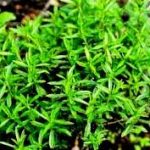 Savoury Winter (Satureja Montana) Called Bone-Kruit. A herb adding flavour to vegetables/beans/flatulent making veggies by adding a handful of leaves/stems to the boiling water, removes the flatulent properties! Antiseptic, antimicrobial, aromatic, calming. Different types of gastro-intestinal problems, treatment of colic, flatulence, gastro-enteritis, dyspepsia, nausea, diarrhea. Bronchial congestion, sore throat, menstrual disorders, cramps. Rub onto wasp stings for instant relief.
Savoury Winter (Satureja Montana) Called Bone-Kruit. A herb adding flavour to vegetables/beans/flatulent making veggies by adding a handful of leaves/stems to the boiling water, removes the flatulent properties! Antiseptic, antimicrobial, aromatic, calming. Different types of gastro-intestinal problems, treatment of colic, flatulence, gastro-enteritis, dyspepsia, nausea, diarrhea. Bronchial congestion, sore throat, menstrual disorders, cramps. Rub onto wasp stings for instant relief.
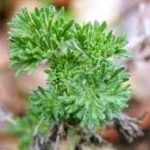 Southernwood – Artemisia abrotanum – Leaves rubbed onto skin is strong insect repellant, especially for mosquitoes. Grown in hen houses to repel the insects habitually residing in chicken feathers, chickens love eating this plant. A tea taken is a tonic for the stomach and intestines. Nickname is ‘Lad’s Love’ as it is known to stimulate hair growth, either made into a tea and applied to the scalp, or infused into a light oil.
Southernwood – Artemisia abrotanum – Leaves rubbed onto skin is strong insect repellant, especially for mosquitoes. Grown in hen houses to repel the insects habitually residing in chicken feathers, chickens love eating this plant. A tea taken is a tonic for the stomach and intestines. Nickname is ‘Lad’s Love’ as it is known to stimulate hair growth, either made into a tea and applied to the scalp, or infused into a light oil.
 Stevia (Stevia rebaudiana) Herbal sweetener, adds no calories, and has no harmful side effects. The sweet leaves of this plant are a pleasant and guilt free alternative to sugar. Active photochemical in stevia leaves, stevioside, is one hundred times sweeter than sugar, the exact amount varies from leaf to leaf and plant to plant. Some studies suggest, mostly animal, stevia may be able to lower blood sugar and has a place in the prevention and treatment of type II diabetes1. Stevia’s value for anyone wishing to cut down on calories from sugar as part of a healthy diet is unquestionable.
Stevia (Stevia rebaudiana) Herbal sweetener, adds no calories, and has no harmful side effects. The sweet leaves of this plant are a pleasant and guilt free alternative to sugar. Active photochemical in stevia leaves, stevioside, is one hundred times sweeter than sugar, the exact amount varies from leaf to leaf and plant to plant. Some studies suggest, mostly animal, stevia may be able to lower blood sugar and has a place in the prevention and treatment of type II diabetes1. Stevia’s value for anyone wishing to cut down on calories from sugar as part of a healthy diet is unquestionable.
 St John’s wort – Hypericum perfoliatum – A tea is made from the whole plant for depression, and for viral infections. Tonic for nervous problems, anxiety, tension, insomnia – particularly depression associated with menopause, it eases the symptoms of hormonal change. Valuable for liver, gall bladder. Oil of SJW used for wounds, burns, cramps, nerve pain. Oil can be taken internally for gastric inflammation and peptic ulcers. Warning: Not to be taken along with allopathic anti-depressants.
St John’s wort – Hypericum perfoliatum – A tea is made from the whole plant for depression, and for viral infections. Tonic for nervous problems, anxiety, tension, insomnia – particularly depression associated with menopause, it eases the symptoms of hormonal change. Valuable for liver, gall bladder. Oil of SJW used for wounds, burns, cramps, nerve pain. Oil can be taken internally for gastric inflammation and peptic ulcers. Warning: Not to be taken along with allopathic anti-depressants.
 Sweet Annie (Artemisia annua) Sweet wormwood is the source of the Traditional Chinese Medicine (TCM) ‘Qing Hao’, used over 2,000 years to alleviate fevers. In TCM it is often prescribed in combination with other herbs to treat (in addition to fevers) jaundice, headache, dizziness and nosebleeds. Scientific research into the anti-malarial activity of sweet wormwood began the early 1970s in response to increasing resistance to established anti-malarial drugs of the protozoan parasites which cause malaria (Plasmodium species). The chemical artemisinin, which occurs naturally in the leaves of sweet wormwood, is a potent anti-malarial agent, and can kill the most deadly malarial parasite, Plasmodium falciparum (it is selectively toxic to the asexual erythrocyte stage of the parasites). Artemisinin extracted from sweet wormwood has become extremely important in treating malaria, since resistance to many other anti-malarials has become widespread.
Sweet Annie (Artemisia annua) Sweet wormwood is the source of the Traditional Chinese Medicine (TCM) ‘Qing Hao’, used over 2,000 years to alleviate fevers. In TCM it is often prescribed in combination with other herbs to treat (in addition to fevers) jaundice, headache, dizziness and nosebleeds. Scientific research into the anti-malarial activity of sweet wormwood began the early 1970s in response to increasing resistance to established anti-malarial drugs of the protozoan parasites which cause malaria (Plasmodium species). The chemical artemisinin, which occurs naturally in the leaves of sweet wormwood, is a potent anti-malarial agent, and can kill the most deadly malarial parasite, Plasmodium falciparum (it is selectively toxic to the asexual erythrocyte stage of the parasites). Artemisinin extracted from sweet wormwood has become extremely important in treating malaria, since resistance to many other anti-malarials has become widespread.
 Thyme (Thymus vulgaris) Powerful anti-septic, Internally dry coughs, whooping cough, bronchitis, bronchial catarrh, asthma, laryngitis, indigestion, gastritis, diarrhea, bed-wetting in children. Externally for tonsillitis, gum disease, rheumatism, arthritis, fungal infections. Oil used in aromatherapy for aches and pains, exhaustion, depression, upper respiratory tract infection, skin and scalp complaints.
Thyme (Thymus vulgaris) Powerful anti-septic, Internally dry coughs, whooping cough, bronchitis, bronchial catarrh, asthma, laryngitis, indigestion, gastritis, diarrhea, bed-wetting in children. Externally for tonsillitis, gum disease, rheumatism, arthritis, fungal infections. Oil used in aromatherapy for aches and pains, exhaustion, depression, upper respiratory tract infection, skin and scalp complaints.
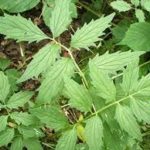 Valerian – Valeriana officinalis – The root is used. Valerian is the main ingredient of all tranquilizers, Valium, Valoid etc. Especially good taken as a tea for people who find it difficult to switch off. Beneficial for any stress condition. It relaxes over contracted muscles and is helpful for shoulder and neck tension, asthma, colic, irritable bowel syndrome, period pain, spasms.
Valerian – Valeriana officinalis – The root is used. Valerian is the main ingredient of all tranquilizers, Valium, Valoid etc. Especially good taken as a tea for people who find it difficult to switch off. Beneficial for any stress condition. It relaxes over contracted muscles and is helpful for shoulder and neck tension, asthma, colic, irritable bowel syndrome, period pain, spasms.
 Horehound White– Marrubium vulgare/ Taken as an infusion or a decoction. Horehound is for coughing and tight chests. Used for tubercolosis, asthma and coughs, especially nagging coughs, wheezing, bronchitis, bronchiectasis (a damaged air passage within the lung) bronchial asthma, non-productive coughs, whooping cough. It causes the secretion of more fluid mucous, readily cleared by coughing. Also regulates heart rhythm. The leaves are used.
Horehound White– Marrubium vulgare/ Taken as an infusion or a decoction. Horehound is for coughing and tight chests. Used for tubercolosis, asthma and coughs, especially nagging coughs, wheezing, bronchitis, bronchiectasis (a damaged air passage within the lung) bronchial asthma, non-productive coughs, whooping cough. It causes the secretion of more fluid mucous, readily cleared by coughing. Also regulates heart rhythm. The leaves are used.
 Wormwood – Artemisia absynthemum – Absinth means ‘ without sweetness’. Tea for the stomach, gall bladder. Taken in small doses and sipped, the intensely bitter taste playing an important part in its therapeutic effect. Also contains Thujone, the brain/memory stimulator. Increases stomach acid and bile production and therefore improves digestion and the absorption of nutrients, making it helpful for a number of conditions including anaemia. It is a vermifuge (expels worms), an insect repellant, malaria. Not to be taken for more than 3-4 days.
Wormwood – Artemisia absynthemum – Absinth means ‘ without sweetness’. Tea for the stomach, gall bladder. Taken in small doses and sipped, the intensely bitter taste playing an important part in its therapeutic effect. Also contains Thujone, the brain/memory stimulator. Increases stomach acid and bile production and therefore improves digestion and the absorption of nutrients, making it helpful for a number of conditions including anaemia. It is a vermifuge (expels worms), an insect repellant, malaria. Not to be taken for more than 3-4 days.
 Yarrow – Achillea millefolium – A powerful styptic – (stopping bleeding). Bruised leaves can be applied anywhere for any bleeding including nose bleeds. The leaves taken as a tea are powerful for regulating the menstrual flow, reduces menstrual heavy bleeding, eases period pain, internal bleeding, and has an antispasmodic action. It helps hayfever, cystitis, weak digestion, colds, flu, lowers high blood pressure, improves venous circulation and tones varicose veins. Also breaks and reduces fevers by inducing sweating. Added to the compost heap in broken handfuls to layers within, decomposes the heap in a third of the time. Can be taken continuously.
Yarrow – Achillea millefolium – A powerful styptic – (stopping bleeding). Bruised leaves can be applied anywhere for any bleeding including nose bleeds. The leaves taken as a tea are powerful for regulating the menstrual flow, reduces menstrual heavy bleeding, eases period pain, internal bleeding, and has an antispasmodic action. It helps hayfever, cystitis, weak digestion, colds, flu, lowers high blood pressure, improves venous circulation and tones varicose veins. Also breaks and reduces fevers by inducing sweating. Added to the compost heap in broken handfuls to layers within, decomposes the heap in a third of the time. Can be taken continuously.
This post was brought to you by Bridget Kitley
 Gardeners Club The Gardeners Club is a free to join online club for everyone with an interest in gardening and gardens.
Gardeners Club The Gardeners Club is a free to join online club for everyone with an interest in gardening and gardens.

